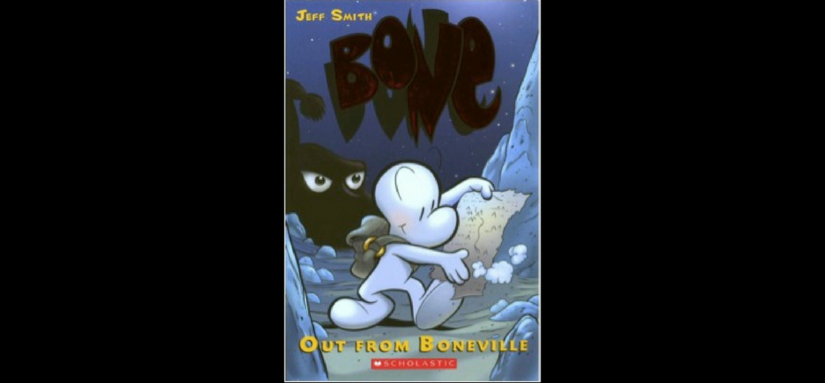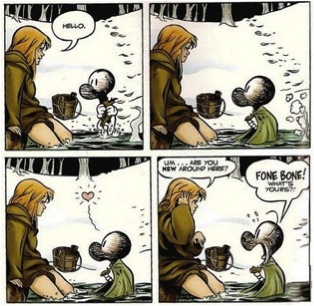All this month, we’ll be helping Children’s Hospital Los Angeles‘ Make March Matter campaign, which aims to raise over a million dollars in March alone for CHLA through the efforts of its corporate partners, among which we are proud to be numbered. Children’s Hospital Los Angeles sees over 528,000 patient visits annually, and is the top ranked pediatric hospital in California by US News & World Report. You can help Make March Matter by simply attending one of the many events or participating in one of the many initiatives being offered by CHLA’s partners (including our event on Saturday, March 25), all listed at www.makemarchmatter.org.
To help remind us all to Make March Matter to support children’s health, we’ve asked all our contributors here at the website to focus on books and comics for kids, or the books or comics that meant the most to them as kids, because we firmly believe that escaping into literature is just as important in keeping children healthy and happy.
Today’s piece is from novelist and comic-book writer Pat Shand:
Jeff Smith’s Bone is the rare all-ages, creator-owned graphic novel that transcends what people think of as a “comic book.” Let me unpack that a little, because that isn’t to slag off on the medium – I think, as far as storytelling goes, we comics creators have the fewest limitations of any art form. Here’s the thing, though, and this is hard to grasp – even for me, and I’m making the point: Not everyone knows what comic books are these days.
When I travel to exhibit at comic conventions, I’ll often find myself talking to people on planes (briefly – I’m not a monster), in Lyfts, that kind of thing. When the inevitable “What do you do?” moment comes up, and I say “I write comics,” the standard reaction is puzzlement. Most folks think I mean I’m a stand-up – because, and I know this is wild to think for we few, we happy few, who thrive in a four-paneled world. Thing is, though, to the public at large, comics are beyond niche… and some folks I’ve spoken to didn’t even know they’re still produced. Now, say “graphic novel,” thanks to the branding at Barnes & Noble and Amazon and places like that, and you’ll get more understanding from the public – and that’s why I’m not resistant to that term like some of my peers. Folks get what that means.
Still, though, comics aren’t widely understood in American culture. Normally, all-ages comics are stocked in the graphic novel section at bookstores, right next to From Hell by Alan Moore. It’s a bizarre thing, but it’s accepted. I’ve seen small changes, with titles like Lumberjanes and all of Raina Telgemeier’s work being stocked in the young adult lit sections rather than in the standard graphic novel area, but those are still outliers. It’s a terrific start, though, and I think Bone deserves credit as being one of the first and most prominent books to break out of the forced obscurity that people or corporate entities who don’t understand how great, how literary, and how fun comics can be put it in. I say this from a place of experience. I read a few comics as a kid, but I was never obsessed. I didn’t go to comic shops and I didn’t consider myself a comics reader, not really, until my twenties. Even during that time, though, when I was mostly looking for middle grade and YA prose – along with Stephen King novels, on nights where I valued my entertainment more than my lack of horrifying nightmares – I found myself intrigued by Bone. Those graphic novels were stocked right along with the rest of the books, which was all I needed as a reader to not make that unnecessary separation. No, I didn’t understand the way comics were produced and would’ve probably assumed that a comics writing traveler, if not a stand-up comedian, perhaps was in the business of reprinting old superhero comics… but I understood Bone. I understood the packaging, I understood its place on the shelf next to other books that I was buying, and I understood that it was a story that used images and text to build a narrative. It sounds incredibly obvious, but I think that is a thing that we as comics readers sometimes take for granted to our detriment.
In any case, I bought the first volume of Bone, in full color, but never read it. It was nothing against Bone, because I really was interested – but I was also obsessed with books, buying far more than I could ever read. I finally got the chance to read it just in time for this special month at Blastoff Comics – and, in reading it, I understand why it was able to earn that coveted place on a shelf where more eyes might see it – especially eyes that otherwise wouldn’t land on a comic. Bone starts off as a light and humorous tale, driven almost exclusively by visual gags in the first chapter. It felt like a particularly clever and well-drawn newspaper strip… until it very much didn’t. Halfway through the second chapter, with the introduction of Thorn, the depth of Smith’s world building begins to become clear. Minor, humorous bits are built upon in surprising ways, exchanges between characters hint at real history and depth, and the silly villains from the opening scenes quickly become menacing in real ways as we travel deeper into the story along with Fone Bone, our protagonist. The humor is consistently there, as is the sweetness and positivity, but that sense of creeping dread surprised me.
It’s that depth and scope that made Bone stand out and work for readers unfamiliar with the medium, I believe. Here’s the thing, though. Bone is excellent, and it’s an amazing achievement. But let’s revisit that first sentence of this article: Jeff Smith’s Bone is the rare all-ages, creator-owned graphic novel that transcends what people think of as a “comic book” – but it doesn’t have to be. What Bone shows is that, more than anything else, comics can be anything.





Comments are closed.